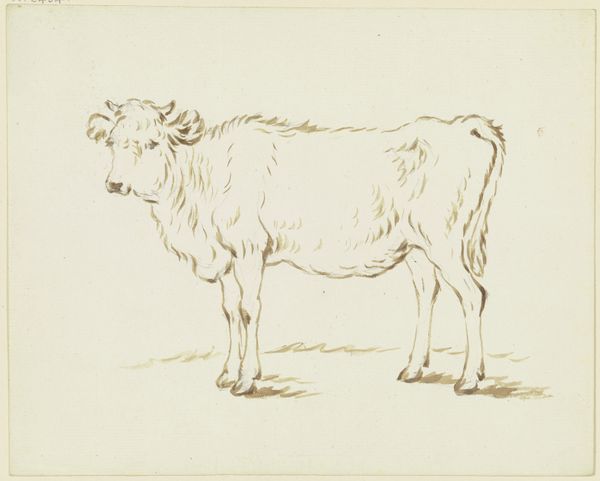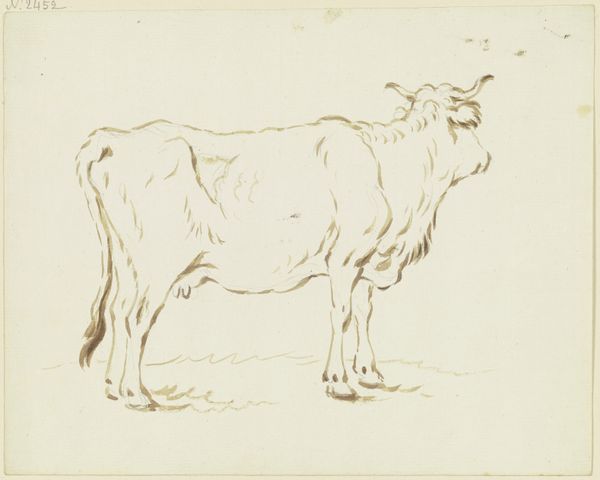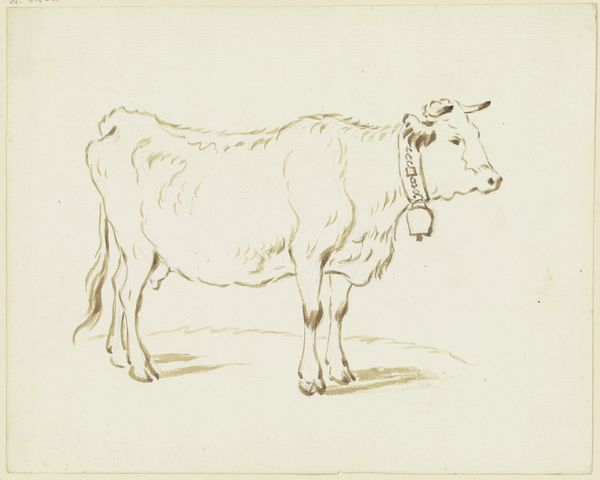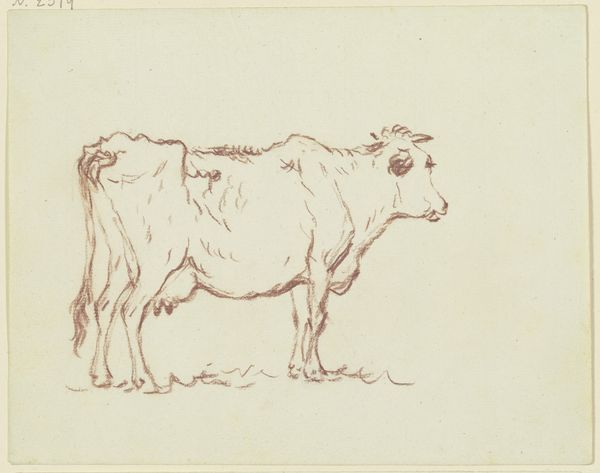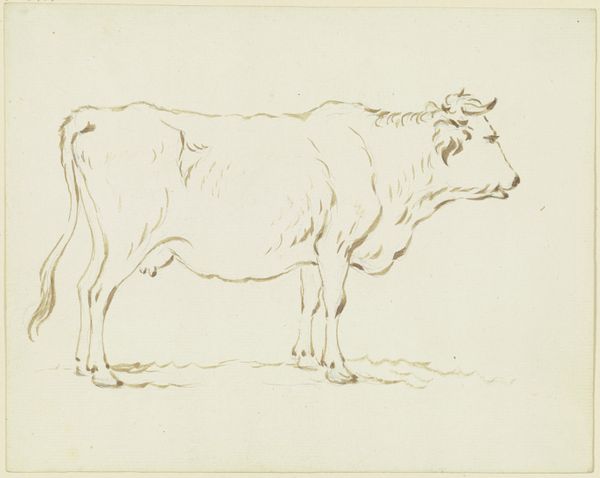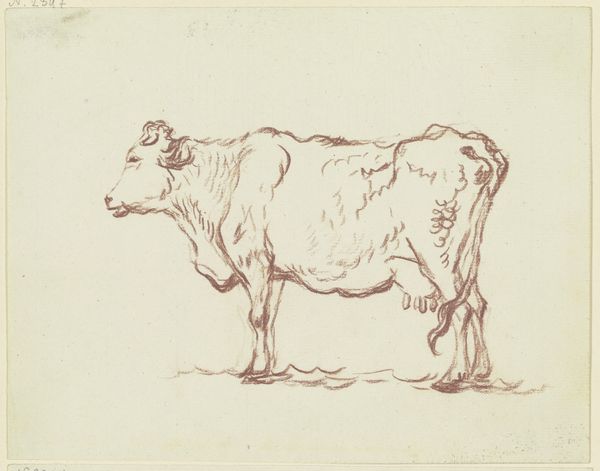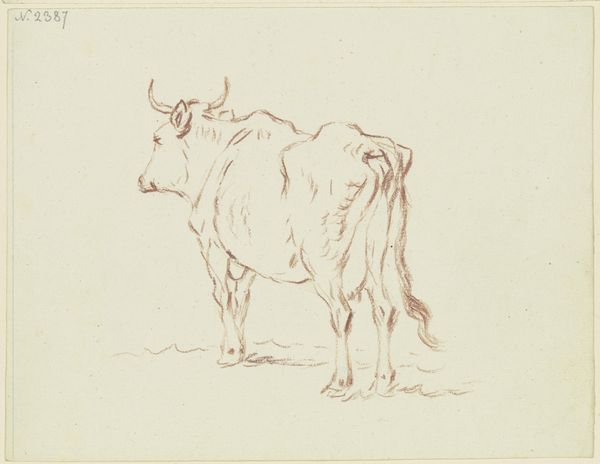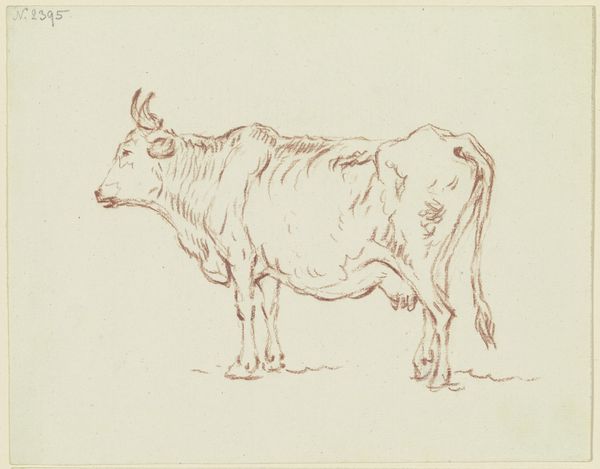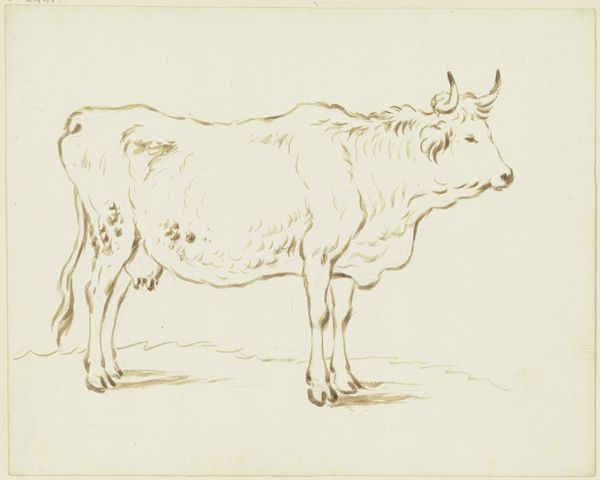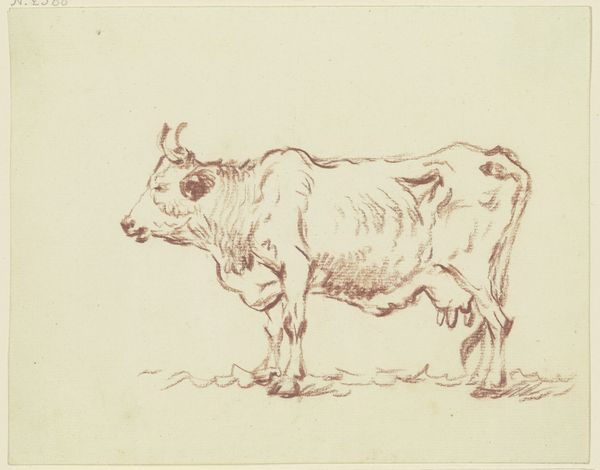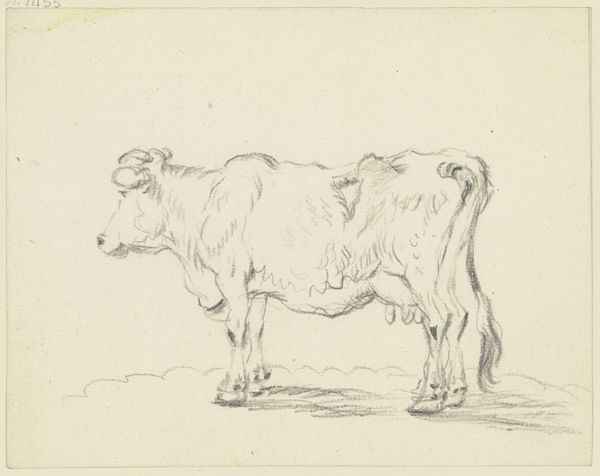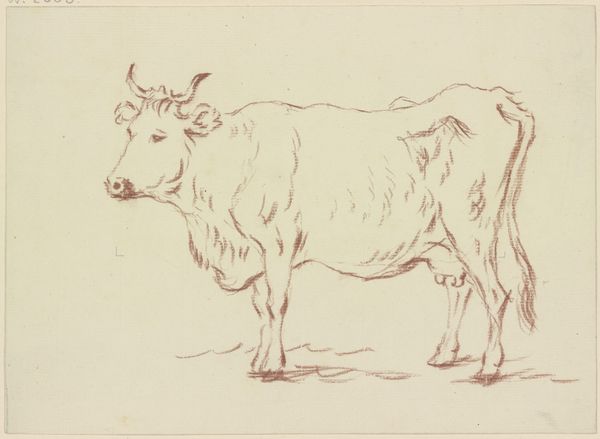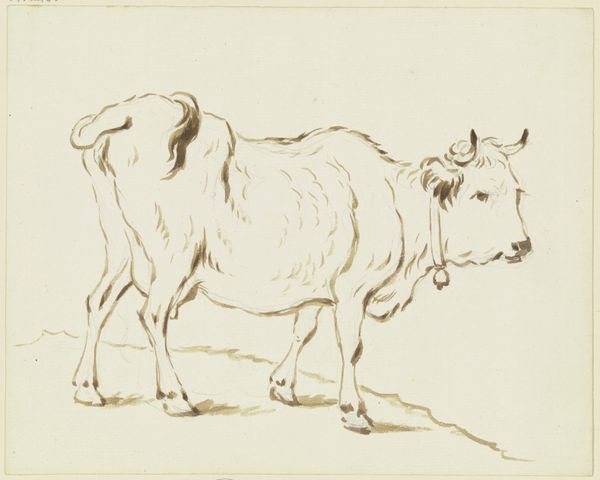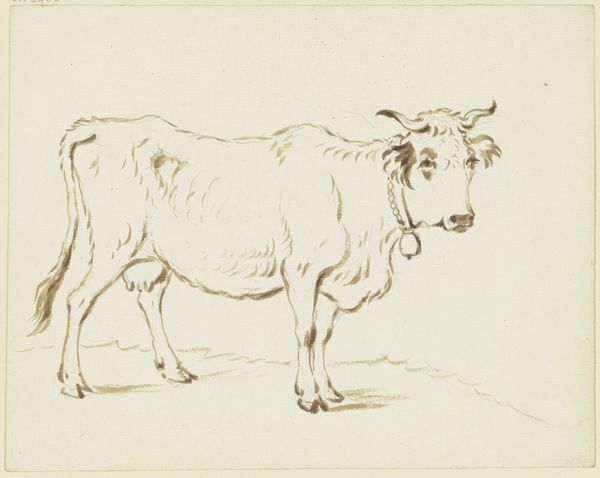
drawing, ink, graphite
#
drawing
#
animal
#
landscape
#
etching
#
form
#
ink
#
line
#
graphite
#
realism
Copyright: Public Domain
Editor: We’re looking at “Standing Cow to the Right,” a drawing, possibly in ink and graphite, by Friedrich Wilhelm Hirt. There's a simplicity to it; a single cow, sketched with a surprising amount of detail considering the sparse lines. What story do you think this drawing tells us? Curator: It's fascinating how Hirt, even in this seemingly straightforward depiction, taps into the changing role of livestock in society. Think about the socio-economic shift occurring when he might have created this. The rise of agrarian societies, enclosure movements… livestock became potent symbols of property, of sustenance, and of a certain social order. Do you see any elements that could point toward those concerns? Editor: I suppose the fact that it's *standing* reinforces that idea. Like, it's posed, presented as a symbol, not just grazing or something. It feels very deliberate, now that you mention it. Curator: Precisely! The drawing becomes a statement. Not just of rural life, but about the human control and organization *of* rural life. This isn’t just a cow; it's an idea *of* a cow, shaped by economic and social pressures. Where and when do you think images like these were typically displayed? Editor: Probably not in a grand salon. More likely a farmhouse or maybe even used as a study for a larger painting. It's function definitely speaks to its intent, right? Curator: Absolutely! The intended audience informs the image as much as the artist’s hand does. It all reflects the intertwined history of art and society. Editor: I've definitely gained a new appreciation for the cow's place in art... and history! Curator: Indeed. It is in seemingly simple subjects like this that complex societal structures are revealed.
Comments
No comments
Be the first to comment and join the conversation on the ultimate creative platform.
